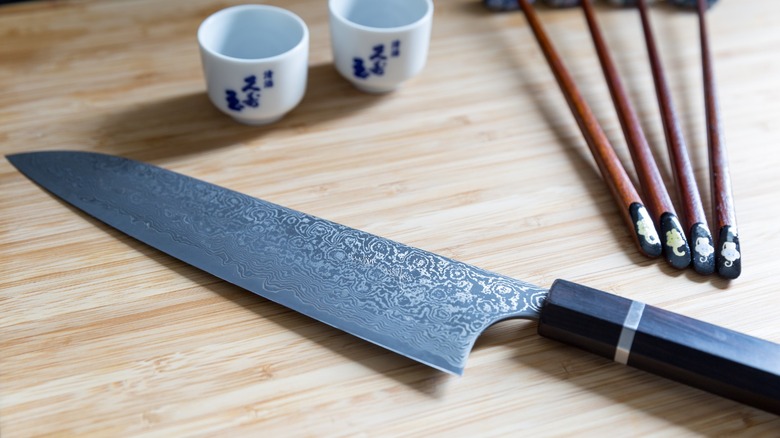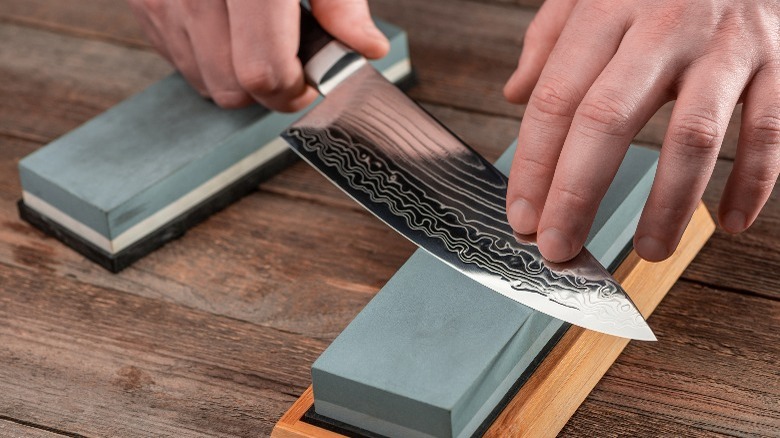Why Are Japanese Knives So Expensive?
Are you looking for the next addition to your kitchen tool kit? Then you've probably heard people singing the praises of Japanese knives. Chef Bobby Flay uses the Shun Classic Western, and Chef Giada De Laurentiis' blade of choice is the Imarku 7-inch Santoku knife. Iron Chef legend and Hiroshima native Masaharu Morimoto brings his collection of Japanese knives to battle in competitions. When the stakes are so high, there has to be a reason professional chefs will place their bets on a certain tool.
Japanese knives are a feat of craftsmanship — with a steep price to match. In the United States, finding a single professional-grade Japanese knife will often come with a price tag upward of $100.These are knives you'll want to keep in top shape. They're expensive because of a number of factors, but it's primarily because of their performance and the painstaking process it takes to forge one. And let's be honest: they just look really cool.
Japanese knives are a work of art
The key characteristics of a Japanese knife are its sharpness, utility, comfort, and visual design. These knives are hammered by experienced metalsmiths using high-grade steels. It takes someone with years of practice to evenly hammer the blade to the correct thinness without it being too brittle. The blade must then be ground, polished, and sharpened.
There's a when and why to any type of knife, and many Japanese knives are actually single-bevel, meaning they're heavily sharpened on one side. This is ideal for thin, precise cuts you would use for sashimi, fileting fish, or creating near-translucent slices of vegetables. Another noticeable detail these knives have is their weights. Japanese knives are lighter to hold, and the metal supporting the blade only reaches halfway into the handle, as opposed to other knives where the metal bit goes all the way through the handle.
Japan has a rich history of metalsmithing dating back hundreds of years. The crafting philosophy not only prioritized quality, but aesthetic as well. In swordmaking, the kitae hada refers to the grooved patterns in a blade, often resembling wood or flowing water. You may notice these intricate designs in modern Japanese knives, meaning someone took the extra time and care to make it beautiful. It's likely this dedication to craftsmanship and attention to detail that compels people to pay a higher sale price. If there's one knife home cooks should splurge on, it's a Japanese knife.

